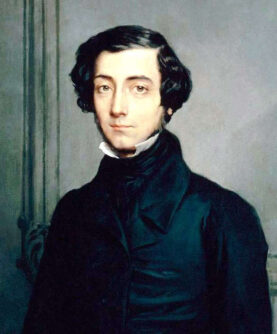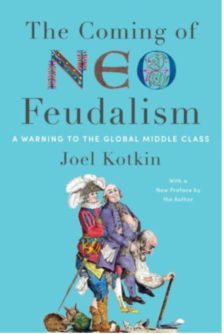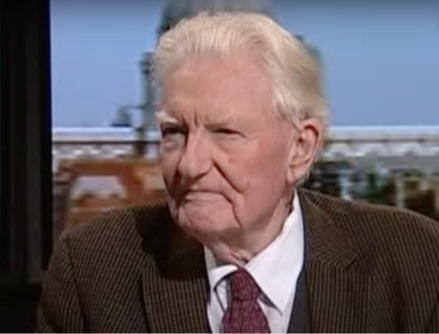Newly out in paperback, Joel Kotkin’s book on the coming “neo-feudalism”—comparing current class conditions to those of the Middle Ages—correctly characterizes the current status and a current role of foundations.
Since Encounter Books released Joel Kotkin’s The Coming of Neo-Feudalism: A Warning to the Global Middle Class in paperback earlier this week, we republish the below article. It originally appeared on July 6, 2020.
Two classes corresponding to the French First and Second Estates of the Middle Ages will be at the apex of the coming new, hierarchical class structure, according to Joel Kotkin’s historically informed and insightful new book The Coming of Neo-Feudalism: A Warning to the Global Middle Class.
Kotkin’s new First Estate is a reborn “clerisy” dominating the upper ranks of a professional elite. This class, by his telling, includes those nobles leading academia, the media and culture—and philanthropy, which should duly take note.
His new Second Estate is an aristocracy of tech oligarchs with extraordinary wealth and access to ever more information, along with growing digital direction of its very movement. The Third Estate includes a yeomanry of minor property owners, small businessmen and -women, mid-level professionals, and skilled workers, and an increasing number of property-less serfs.

Joel Kotkin
The prolific Kotkin is a fellow in urban studies at Chapman University in Orange, Calif., and executive director of the Houston-based Urban Reform Institute. He intelligently covers global geographic, demographic, economic, political, and social trends. He has authored seven previous books, is executive editor of NewGeography.com and a City Journal contributing editor, and regularly contributes to American Affairs, Daily Beast, Quillette, The Orange County Register, and RealClearPolitics.
An elite
When the cultural role of the First Estate clergy diminished after Medieval times, the liberal Kotkin writes,
their part was gradually taken up by what Samuel Taylor Coleridge termed a “clergy” of intellectuals. Religious clerics would remain part of this class, though on the whole it grew more secular over time. Today’s clerisy includes university professors, scientists, public intellectuals, and heads of charitable foundations. Such people have more or less replaced the clergy as what the great German sociologist Max Weber called “the new legitimizers.”
Maybe you know some. (For that matter, maybe you are one.)
Kotkin traces the “concept of a governing class whose superior cognitive ability makes them the rightful leaders … back to at least ancient Greece, when Plato proposed a society run by the brightest and most talented—a vision that Marx described as ‘an Athenian idealization of the Egyptian caste system.’” In the 20th Century, the “New Deal era brought considerable support for placing more decision-making power in the hands of university professors and other specialists, including some well-credentialed journalists.”
Kotkin notes that in 1973, “Daniel Bell recognized an emerging ‘knowledge class,’ composed of people whose status rested on educational attainment and access to knowledge in a postindustrial society.” Echoing some of that about which Daniel Markovits has recently written in The Meritocracy Trap: How America's Foundational Myth Feeds Inequality, Dismantles the Middle Class, and Devours the Elite, Kotkin continues, the knowledge class “[t]heoretically … represented a meritocracy, but this class has become mostly hereditary, as well-educated people, particularly from elite colleges, marry each other and aim to perpetuate their status,” including for subsequent generations.
Among others, Kotkin also cites previous work of the new The New Class War: Saving Democracy From the Managerial Elite author Michael Lind—who “uses ‘professional and graduate degrees’ as a way of measuring what he calls the ‘managerial overclass,’ which includes ‘private and public bureaucrats who run large national and global corporations’ as well as directors of nonprofits and university professors.”
Again, maybe you know some.
Many members of this First Estate clerisy, which is “a group far larger and broader than the oligarchy,” Kotkin says, “are well positioned to exert a disproportionate influence on public attitudes, and on policy as well—that is, to act as cultural ‘legitimizers.’”
Slumber
In January 1848, as Kotkin recently wrote in a fine Quillette essay, the insightful French aristocrat who previously analyzed American democracy and civil society, Alexis de Tocqueville, “warned Europe’s elites that they were ‘sleeping on a volcano’ of furious working-class resentment.” A Medieval-like class structure had been taking shape there then, too.

Alexis de Tocqueville, by Théodore Chassériau (1850)
Following the February 1848 Revolution in France overthrowing King Louis Philippe and creating the Second French Republic—one of a wave of revolutions there that year—Tocqueville was then elected to the Constituent Assembly in April. In May, Tocqueville fretted, “I saw society cut into two: those who possessed nothing, united in a common greed; those who possessed something, united in a common terror. There were no bonds, no sympathy between these two great sections; everywhere the idea of an inevitable and immediate struggle seemed at hand.”
Tocqueville—of whom we at The Giving Review have long been and remain admirers, and whose thinking we tried to apply in our professional lives as foundation program officers—properly perceived and understood that which gave rise to populist sentiment. As Kotkin does now, his The Coming of Neo-Feudalism shows.
Self-awareness, compensation, and legitimization
The current equivalent of America’s First Estate clerisy, including that of it in establishment philanthropy, should self-awarely take cognitive-elite note of and understand the contemporary rise of this sentiment, too, whether ideologically or practically sympathetic to that rise or not. Grantmakers should not “sleep on it.” Generally, some informed foundation fretfulness would sure seem fitting, fully acknowledging that resulting actions based on it could take many different forms.
Among others, one specific such form that could result in philanthropy would be to realize and understand a version of Kotkin’s (and Weber’s) “legitimizing” function of the clerisy. The currency of legitimacy that philanthropy can confer may be just as or more influential and effective than the other kind it can dispense—basically, cash.
Mere money can pay the light bills and copy-machine costs at a university research center or think tank and the salaries of idea producers and their marketers at them, yes, and that’s all essential, of course. It could also support, for example—as Kotkin, citing his Chapman University colleague Marshall Toplansky, suggests in his Quillette piece—projects that actually engage in or help make policy arguments for “bolstering medical coverage, improving skills-based education, building affordable housing in redundant office and retail developments, offering incentives to businesses to hire new talent, and expanding employee ownership of enterprises.”
The kind of “clerically” conferred legitimization that Kotkin considers, however, can add more, and maybe more-crucial, value to an entire enterprise. Grant recipients certainly know this. Grantmakers themselves, and those who work for and advise them, should perhaps be more cognizant of this currency. When a foundation’s checks clear, that’s good, for the giver and the grantee. If that’s the only gain from the grant, though, that’s bad. Something’s missing; there could, and should, be more.
As the popular respect for and perceived value of philanthropy and its giving might decline as intimated in Kotkin’s The Coming of Neo-Feudalism, its clerics would do well to try better spending and preserving both types of currencies.
You may know some.







I fully agree foundations should help people both directly face their immediate problems–sometimes called funding charity–and seek to aid/solve the major issues a group faces that would improve their lives,